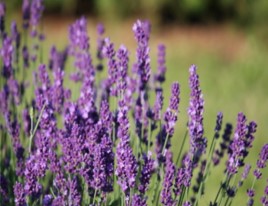Essential Oils (EO/eo) are made up of natural chemical components found in plants. These chemical components power each oils’ therapeutic properties.
Chemical components help plants adapt to their habitat, attract pollinators, ward off pests and more. If you grow your own veggies and herbs this is familiar to you.
Individual chemical components fall into families. Just like we are a part of families.
When purchasing oils an aromatherapist such as myself will request a GC/MS (Gas Chromatography/Mass Spectrometry) report. GC/MS tests show which chemical components exist in an eo and the exact amounts. These chemical components are organized under chemical families.
These GC/MS tests are run by specialized lab chemists who take samples of the essential oils and then they process them to reveal each chemical component in each oil and the exact amount. This is critical in deciding which oil to be used with the intended purpose.
Various species of the same plant can contain different chemical components that translate to unique benefits and uses.
Why Latin Names Matter and we’ve all seen them in the greenhouses, nurseries and on seed packets.
2 important aspects to consider when it comes to Latin names
- Genus is the first part of a Latin name. the genus is always capitalized (and always a noun)
- Species is the second part of the name, often describing a characteristic or feature of that plant species (so it’s always an adjective). The species is always written with a lower case first letter.
Let’s Talk about Lavender
I have chosen to use Lavender for our learning example. It is one of the most commonly used oils, familiar to many and a known aromatic.
Some educators say there are over 45 species of lavender, while others say over 100. We do know there are over 450 varietals.
Regardless, lavender is a popular essential oil. Here we take a look at 2 of their Latin names.
↓ ↓
Genus Species

Lavendula latifolia
↓ ↓
Genus Species

They share the same genus and are different species.
What comes to mind when you think of lavender?
What is your first reason or possibly main purpose for using lavender?
- Wanting a restful sleep?
- Hoping to calm your stress/stressful state?
- Perhaps healing your skin?
These are the best-known properties for the species Lavendula angustifolia, thanks to its
primary chemical components. This is the lavender that most people are familiar with, sometimes called true lavender. What are the main components of Lavender angustifolia?
Linalool and linalyl acetate
Now let’s look at Spike (not Lee) Lavender Lavendula latifolia
Spike Lavender has different benefits. While both oils are high in linalool, Spike lavender is also high in 1,8-cineole. 1,8-cineole is a component that energizes the mind and body. This would not be a good oil to use for sleep or to calm oneself.
It also has camphor which most of us recognize as a cool feeling on the skin and the scent of Vicks or Noxema or mothballs. (a smell reminiscent from baby boomers’ youth)
Let’s compare the Chemical Compounds of these 2 essential oils
Various species of the same plant can contain different chemical components that translate to unique uses and benefits.
Lavender* Spike Lavender*
Lavendula angustifolia Lavendula latifolia
Linalool 21.14% Linalool 45.1%
Linalyl acetate 27.47% Linalyl acetate 0.65%
Camphor 0.28% Camphor 13.2%
1,8-Cineole 1.11% 1,8-Cineole 23.9%
* These compound percentages are based on 1 company’s oils at the time of my purchase after the distillation and bottling process. The numbers can, and do change based on country, land, altitude, weather and other significant factors.
SAFETY
Lavender Spike Lavender
Lavendula angustifolia Lavendula latifolia
Very gentle without any Generally, non-toxic. Non-irritating.
known safety issues. Stimulating for some. May be best for
daytime usage.
- Take care during pregnancy
- Take care with children under 10 due to
the 1,8-cineole - Take care with asthmatics and around asthmatics
I trust that you have found this to be interesting and educational. Aromatherapy is a huge ocean! Please be responsible and do your research before making purchases. I have been a professional, certified aromatherapist since 2003 after studying for a couple of years. In reality, I have learned more in the past 6 years then in the previous time and have attained further certifications. As a life-long learner from the age of 20, I have pursued knowledge from the top educational institutes in the world. So much to learn and share. Science changes as does human knowledge of it.
Acknowledgment to Aromahead and the ACP program

Recent Comments